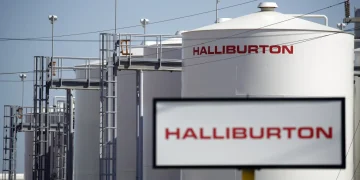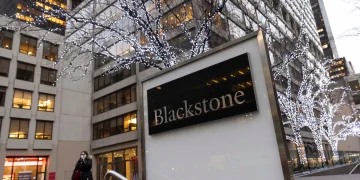Fluor Corporation: Navigating Geopolitical Winds and Valuation Opportunities
Fluor Corporation (NYSE: FLR), a global leader in engineering, procurement, and construction (EPC), faces both opportunity and risk in 2025. The company boasts a $28.5 billion backlog, with 55% from international projects. Additionally, its 2024 Free Cash Flow to Equity (FCFE) reached $607 million, reflecting a 5-year CAGR of 26.6%. This demonstrates resilience despite volatile markets. My Discounted Cash Flow (DCF) valuation uses a 5% growth rate for 2025–2029, a 3% terminal growth rate, and a 12.40% WACC. Consequently, Fluor’s intrinsic value stands at $42.61 per share. However, its April 2025 trading price of ~$34.73 suggests undervaluation.
Financial Performance and Valuation Insights
Fluor’s $42.61 intrinsic value derives from a $607 million FCFE. This figure comes from $828 million in operating cash flow, adjusted for $164 million in capital expenditures and $57 million in debt repayments. Furthermore, 2024 revenue reached $16.3 billion, with net earnings of $2.145 billion, boosted by a $1.6 billion NuScale deconsolidation gain. These metrics highlight operational strength. Nevertheless, market discounts reflect concerns over project execution risks, commodity price swings, and geopolitical turbulence, particularly in the Middle East. For example, Fluor secured major contracts like the 2023 Ras al-Khair chemicals project in this region. Such factors contribute to a cautious investor outlook.
Geopolitical Risks Impacting Fluor’s Outlook
Macro dynamics play a critical role. Fluor’s Energy Solutions segment, linked to oil, gas, and energy transition, faces challenges from oil price volatility. Additionally, Middle East instability, including Israel-Palestine and Yemen conflicts, poses risks. No new 2025 Middle East deals have been announced. Moreover, Fluor’s 10-K highlights risks from geopolitical disruptions, which could delay its $28.5 billion backlog. Half of this backlog is targeted for 2025 completion. As a result, analysts project a 34.23% price drop within three months, reflecting market caution.
Opportunities in a Stabilized Middle East
A stabilized Middle East could transform Fluor’s prospects. For instance, peace agreements would likely spur project awards in Saudi Arabia and the UAE. This would accelerate backlog execution and enhance revenue predictability. Consequently, Fluor’s stock could approach my $54 fair value estimate, aligned with Morningstar’s analysis. Energy transition projects, such as carbon capture, are gaining traction. Stability would also reduce risk premiums, boosting investor confidence in Fluor’s diversified portfolio, which spans the techno-industrial complex (TIC) and other sectors.
Challenges of Prolonged Regional Strife
Conversely, ongoing Middle East strife could lead to cost overruns on lump-sum contracts. Delayed projects would further cap near-term upside. Sensitivity analysis reveals Fluor’s intrinsic value ranges from $37.67 (16% CAPM, 8% growth) to $123.98 (8% CAPM, 18% growth). This underscores its potential under favorable conditions. Meanwhile, strategic moves, like divesting non-core assets, strengthen Fluor’s long-term outlook.
Fluor’s $34.73 price undervalues its $42.61 intrinsic worth, presenting a compelling entry point. Patient investors may find opportunity here. Middle East peace could drive significant gains. However, volatility requires caution. Therefore, I recommend a Buy on dips below $32. This strategy capitalizes on Fluor’s robust backlog and growth trajectory. Simultaneously, it hedges against short-term geopolitical risks impacting the techno-industrial complex (TIC) and other sectors.








